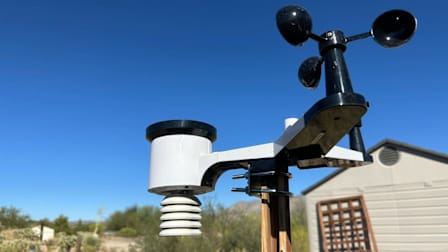A Guide to Eco-Friendly Lawn Helpers
Here's what to know about the products and the practices of lawn care without conventional chemicals
If you’re shooting for an environmentally friendly lawn and garden, you need a holistic approach, not just chemicals (see “How to Rehab Your Yard,” below). The concept of integrated pest management involves using practices like mowing, improving soil health, and other non-chemical practices to try and prevent pest outbreaks before they happen. Still, Zhiqiang Cheng, PhD, University of Hawaii at Manoa associate professor and extension specialist, points out that integrated pest management can also include the use of pesticides to tackle a problem, if the instructions on the label are strictly followed.
If you need to use a chemical pesticide or fertilizer, you may wonder if products designed to be more environmentally friendly would be effective. Here’s a guide to various alternatives to conventional lawn products.
Fertilizers
Fertilizers generally release nitrogen, phosphorus, and potassium. The percentages of each element are listed, in that order, in a sequence of three numbers on every fertilizer label, written as, for example, “10-10-10.” Organic types may contain plant or animal material, such as bone meal or manure. These must be broken down by soil bacteria and fungi, so they may work more slowly than conventional fertilizers, but can improve soil health over time, says Chip Osborne, a horticulturist and organic land care industry consultant. As with conventional products, too much organic fertilizer can contribute to water pollution, so test your soil to find out which nutrients it needs. And in general, look for products with a seal from the Organic Materials Review Institute (OMRI); “organic” alone doesn’t mean much.
Also try: Leaving grass clippings on your lawn, which adds plenty of nutrients. Allow clover to flourish in your grass to provide nitrogen to the soil.
Insecticides
These can include pyrethrin, neem oil, spinosad, and insecticidal soaps. While these do work, some may harm beneficial insects such as bees. They carry some risks of skin or eye irritation, so as with conventional products, you should carefully follow all directions on the label.
Also try: Welcoming natural enemies of pests, such as assassin bugs and spiders. Mowing grass higher and planting a variety of native plants will benefit natural enemies, says Shaku Nair, PhD, of the Arizona Pest Management Center.
How to Rehab Your Yard
Ready to rethink your yard? Try these easy strategies to improve the health of your lawn and make it safer for your family and the environment. Keep in mind that the needs of lawns vary widely, depending on climate, sun exposure, the types of soil and grass you have, and more. A cooperative extension service can provide plenty of advice more tailored to your land. (You can find services in your state here.) But these tips are a good start.
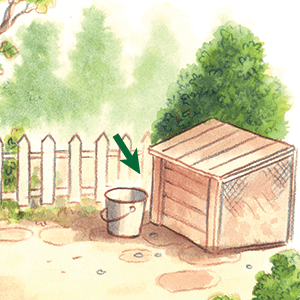
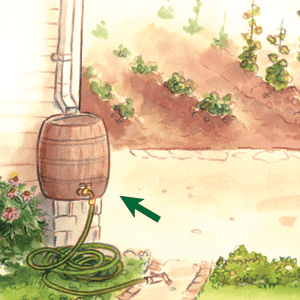
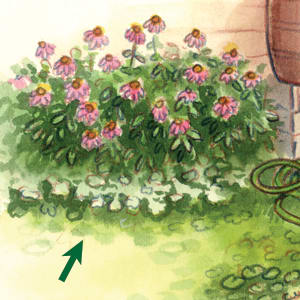
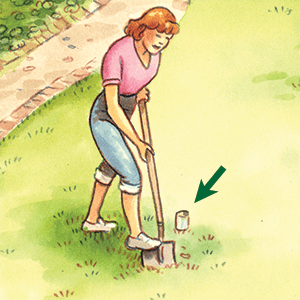
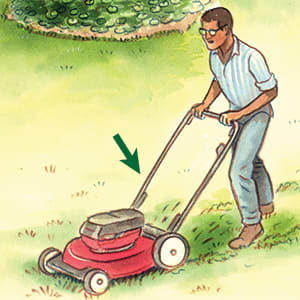
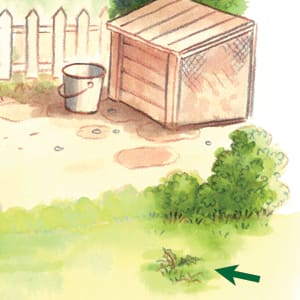
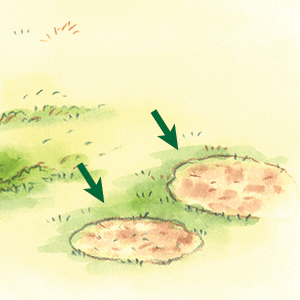
For More Advice
A wealth of resources are available for learning more about sustainable and organic lawn-care practices for your particular region and climate. Here are just a few.
For more advice on environmentally friendly lawn-care practices, see:
- The Northeast Organic Farming Association Organic Land Care Program’s Introduction to Organic Lawns and Yards (PDF)
- Rutgers University’s Organic Land Care Best Management Practices Manual
- The University of Texas A&M AgriLife Extension’s Earth-Kind Landscaping site
- The University of California Statewide Integrated Pest Management Program’s resources for fighting home, garden, turf, and landscape pests
- NC State Extension’s Organic Lawn Care: A Guide to Organic Lawn Maintenance and Pest Management for North Carolina
- The University of Florida Institute of Food and Agricultural Sciences’ Sustainable Landscaping site
- The City of Seattle’s Ecologically Sound Lawn Care for the Pacific Northwest (PDF)
For more on finding the right plants for the right place in your yard:
- The Lady Bird Johnson Wildflower Center’s Native Plants Database
- The National Audubon Society’s Native Plants Database
- The Department of Agriculture’s Plants database
Editor’s Note: A version of this article also appeared in the May 2021 issue of Consumer Reports magazine.


















